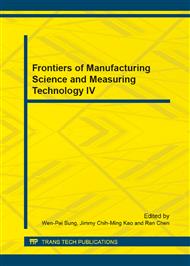p.735
p.739
p.743
p.747
p.751
p.755
p.760
p.767
p.776
Theoretical Study on Bridge Structure Condition Evaluation Based on Health Monitoring Data
Abstract:
After processed the signals obtained from monitoring system, one theory of condition evaluation was proposed on basis of a new evaluation parameter—index variation. One new condition grade division method was proposed from approximate statistic distribution of index variation, and as per the concept of confidence degree and confidence interval. Because the monitoring data and the standard of condition grade division were all interval numbers, interval extension evaluation theory was adopted to establish the model of condition evaluation. Set-Valued Statistics and gravity center based decision theory were introduced to divide weight into subjective weight and objective weight to make calculation. This evaluation method was found to be reasonable and had good project practicability.
Info:
Periodical:
Pages:
751-754
Citation:
Online since:
August 2014
Authors:
Keywords:
Price:
Сopyright:
© 2014 Trans Tech Publications Ltd. All Rights Reserved
Share:
Citation:


